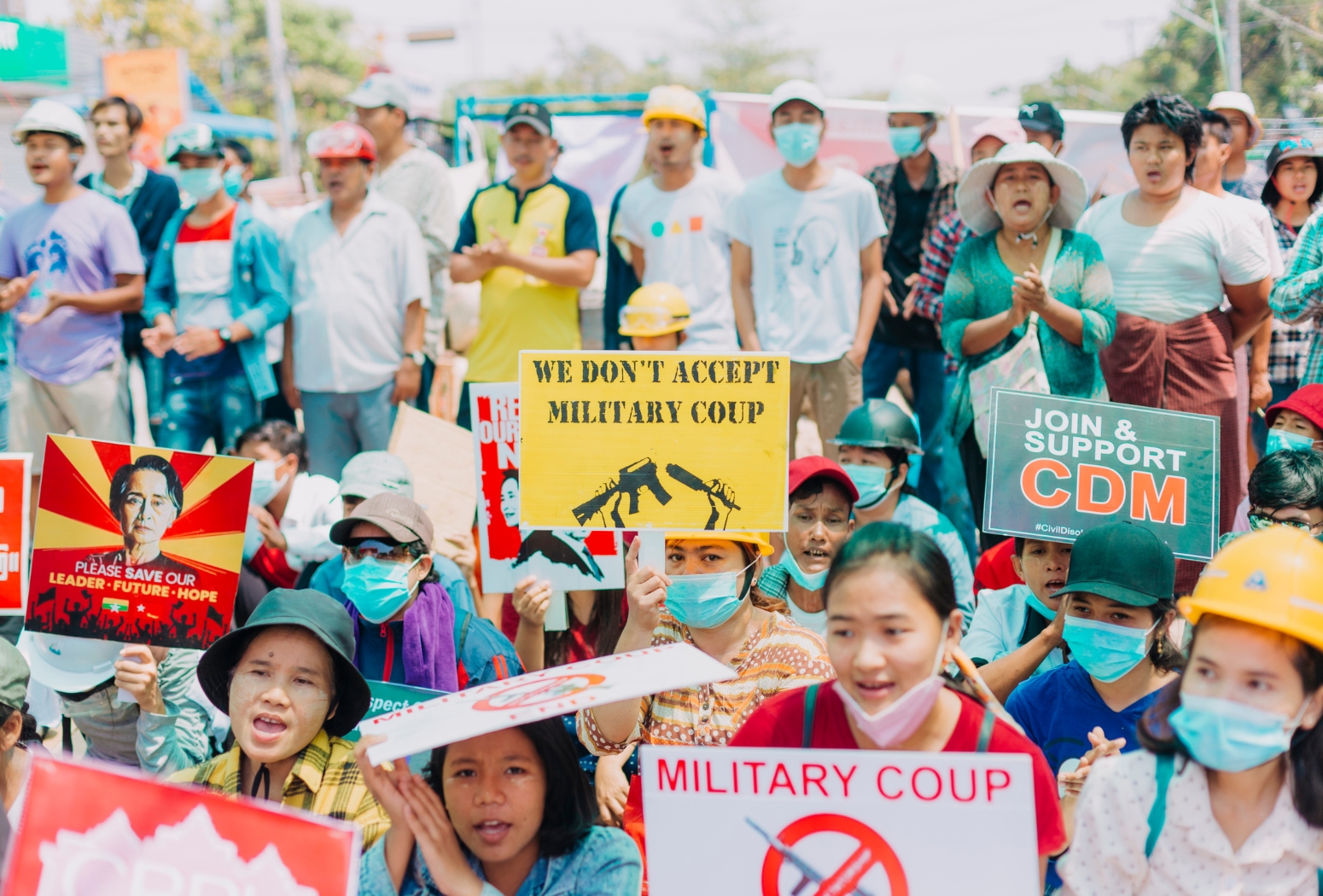From Resistance to Reform
On November 15th, 2023, PartnersGlobal and CANVAS gathered colleagues and partners together for an engaging discussion and exchange of ideas around how activists achieve and sustain the change in society they are fighting for. The event, called “Movements in Transition,” included activists Aye Cee from Myanmar and Hala Noman from Yemen, who shared insights from the transition periods in their countries. They were joined by Program Director of CANVAS, Breza Race, who presented CANVAS’ latest research on social movements in democratic transitions and CANVAS’ newly developed training curriculum. PartnersGlobal’s Director of MENA and Civil Society Strengthening, Rasha Abdel Latif, moderated the discussion.
The conversation brought to light many of the similarities between the two cases of Myanmar and Yemen, notably the early successes of their non-violent movements. Aye Cee, who describes herself as one of Myanmar’s everyday citizens turned activist following the coup in Myanmar in February 2021, recounted some of the effective tools and tactics used by activists. The Civil Disobedience Movement (CDM), in which civil servants showed their resistance to military rule by peacefully walking out of work, illustrated the number and strength of citizens to bring the country to a standstill. Aye Cee also highlighted the creativity of activists who pioneered innovative strategies such as developing apps to boycott businesses supported by the military regime and launching news organizations to provide alternatives to state run media. Similarly, Hala Noman, who is a Yemeni gender advocate, reflected on the early successes of the resistance movement in her country and region during the Arab Spring protests in 2011. She described how, for the first time, women and youth participated, spoke out, and publicly demonstrated in the resistance movement. Similar to activists in Myanmar, protesters in Yemen used creative means such as developing media and advocacy campaigns to lobby for their demands in non-violent ways. Hala explained that protests were diverse with people from different backgrounds and religions calling for the establishment of a new state and expanded freedoms.
Despite the many early successes and activists’ creativity, in both the cases of Myanmar and Yemen, non-violent movements were not successful in sustaining the changes they sought. Aye Cee explained that the failure of the resistance movement in Myanmar to prevent backsliding and the military’s resumption of power was primarily due to the inability of movement leaders to frame the goals of the transition in a way that reflected the diverse interests and needs of the population. She noted that non-violent resistance requires strategic planning over the longer term and creativity to adapt on the fly, and although ingenuity was demonstrated by young activists in Myanmar, they did not sufficiently plan or have clear end points to measure success. Unfortunately, this has created the perception among many citizens that the only way to oust the military regime is through violence. Similarly, Hala described how the non-violent movement stalled and ultimately the transition process failed because leaders did not take into account the incentives of different actors and spoilers.
Breza connected the panelists’ comments to the findings from CANVAS’ year-long research project, which aimed to analyze how movements can successfully shift from playing a role of resistance to a role of reforming and rebuilding during the post-revolution transition. She explained that in almost all the 25 countries included in the study, movements stopped functioning or ceased to exist after the initial change was achieved. Movements are recognized as instrumental in initiating revolutionary and democratic change but once an initial change happens, there is often no role planned for non-violent movements during the next phase of the transition period. Breza argued that a main responsibility of the international community providing support to movements on the ground is to help movements stay alive after initial changes occur. This requires educating movement members and leaders about their roles before, during, and after initial achievements are made, and helping them recognize the need to switch their mindset from revolution and resistance to visioning and building. She explained that the role of movements after change is to keep governments accountable. What tends to happen when a movement starts and achieves change, is that the excitement quickly passes. This is when the next phase for movements must begin. They need to organize and frame the transition process in order to realize their vision for society and ensure new actors in power do not resume old habits.This is a crucial role and the international community must continue to support and invest in movements for the long haul, since we know that change is a process and can last many decades, after all, “There is no democracy if there are no movements.”
This Movements in Transition discussion connects directly with PartnersGlobal’s recent USAID award for the Powered by the People (PxP) initiative. PxP provides flexible and accessible support that strengthens the agency, resilience, and efficacy of organizers and citizen-led social movements that are advancing human rights, social justice, democracy, and inclusive development around the world.
Jessica Himelfarb is a Program Manager with PartnersGlobal, supporting the civil society resilience portfolio. Currently, she primarily manages the Civil Society Resilience Activity (CSRA) in Serbia. Jessica is passionate about locally-led solutions and strengthening civil society organizations in pursuit of democratic change.
